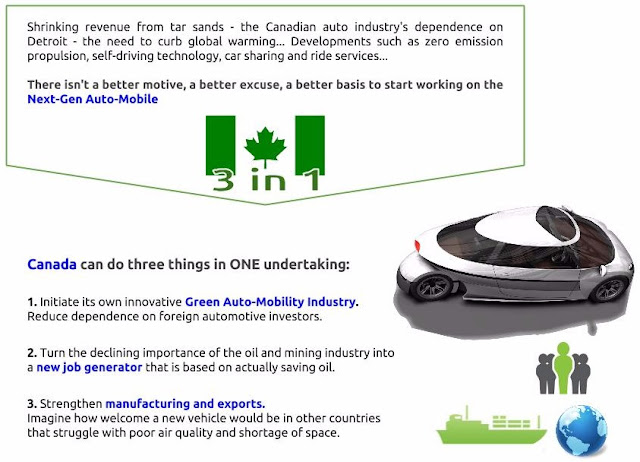Pan-Canadian Approach to Pricing Carbon Pollution - Canada News Centre
Announced by the Canadian Government October 3, 2016
Backgrounder Article from
Pan-Canadian Approach to Pricing Carbon Pollution
In March 2016, the First Ministers committed to putting Canada on a credible path to meet or exceed our national target of reducing greenhouse gas (GHG) emissions by 30 percent below 2005 levels by 2030. The First Ministers agreed that this will require transitioning to a low-carbon economy by adopting a range of measures, including carbon pricing, adapted to the specific circumstances of each province and territory. Federal, provincial and territorial governments are developing a Pan-Canadian Framework on Clean Growth and Climate Change to implement these commitments, for adoption at the First Ministers Meeting in fall 2016.
Economy-wide carbon pricing is the most efficient way to reduce emissions, and by pricing pollution, will drive innovative solutions to provide low-carbon choices for consumers and businesses. British Columbia, Alberta, Ontario and Quebec, representing over 80 percent of the population, have already introduced carbon pricing. More action is needed, however, to expand the application of carbon pricing across Canada and ensure that it plays a significant role in reducing GHG emissions by increasing its stringency over time.
The Government of Canada supports the following principles, which are based on those proposed by the Working Group on Carbon Pricing Mechanisms:
- Carbon pricing should be a central component of the Pan-Canadian Framework.
- The approach should be flexible and recognize carbon pricing policies already implemented or in development by provinces and territories.
- Carbon pricing should be applied to a broad set of emission sources across the economy.
- Carbon pricing policies should be introduced in a timely manner to minimize investment into assets that could become stranded and maximize cumulative emission reductions.
- Carbon price increases should occur in a predictable and gradual way to limit economic impacts.
- Reporting on carbon pricing policies should be consistent, regular, transparent and verifiable.
- Carbon pricing policies should minimize competitiveness impacts and carbon leakage, particularly for trade-exposed sectors.
- Carbon pricing policies should include revenue recycling to avoid a disproportionate burden on vulnerable groups and Indigenous peoples.
The Government of Canada proposes a pan-Canadian benchmark for carbon pricing that reflects these principles and the Vancouver Declaration. Its goal is to ensure that carbon pricing applies to a broad set of emission sources throughout Canada with increasing stringency over time to reduce GHG emissions at lowest cost to business and consumers and to support innovation and clean growth.
The benchmark includes the following elements:
- Timely introduction. All jurisdictions will have carbon pricing by 2018.
- Common scope. Pricing will be based on GHG emissions and applied to a common and broad set of sources to ensure effectiveness and minimize interprovincial competitiveness impacts. At a minimum, carbon pricing should apply to substantively the same sources as British Columbia’s carbon tax.
- Two systems. Jurisdictions can implement: (i) an explicit price-based system (a carbon tax like British Columbia’s or a carbon levy and performance-based emissions system like in Alberta), or (ii) a cap-and-trade system (e.g. Ontario and Quebec).
- Legislated increases in stringency, based on modelling, to contribute to our national target and provide market certainty.
- For jurisdictions with an explicit price-based system, the carbon price should start at a minimum of $10 per tonne in 2018, and rise by $10 per year to $50 per tonne in 2022.
- Provinces with cap-and-trade need: (i) a 2030 emissions reduction target equal to or greater than Canada’s 30 percent reduction target; (ii) declining (more stringent) annual caps to at least 2022 that correspond, at a minimum, to the projected emissions reductions resulting from the carbon price that year in price-based systems.
- Revenues remain in the jurisdiction of origin. Each jurisdiction can use carbon pricing revenues according to their needs, including to address impacts on vulnerable populations and sectors and to support climate change and clean growth goals.
- Federal backstop. The federal government will introduce an explicit price-based carbon pricing system that will apply in jurisdictions that do not meet the benchmark. The federal system will be consistent with the principles and will return revenues to the jurisdiction of origin.
- Five-year review. The overall approach will be reviewed by early 2022 to confirm the path forward, including continued increases in stringency. The review will account for progress and for the actions of other countries in response to carbon pricing, as well as recognition of permits or credits imported from other countries.
- Reporting. Jurisdictions should provide regular, transparent and verifiable reports on the outcomes and impacts of carbon pricing policies.
The Government will work with the territories to address their specific challenges.
This pan-Canadian approach to carbon pricing is a practical and cost-effective way to address climate change and will contribute to substantial emission reductions, stimulate innovation, clean growth and jobs for the middle class to support the transition to a low-carbon economy. The Government of Canada is committed to continuing to work with provinces and territories to implement carbon pricing as a central component of the Pan-Canadian Framework on Clean Growth and Climate Change. It will also continue to engage with Indigenous peoples. By acting now and acting together, we will build a better Canada for our children and grandchildren.



